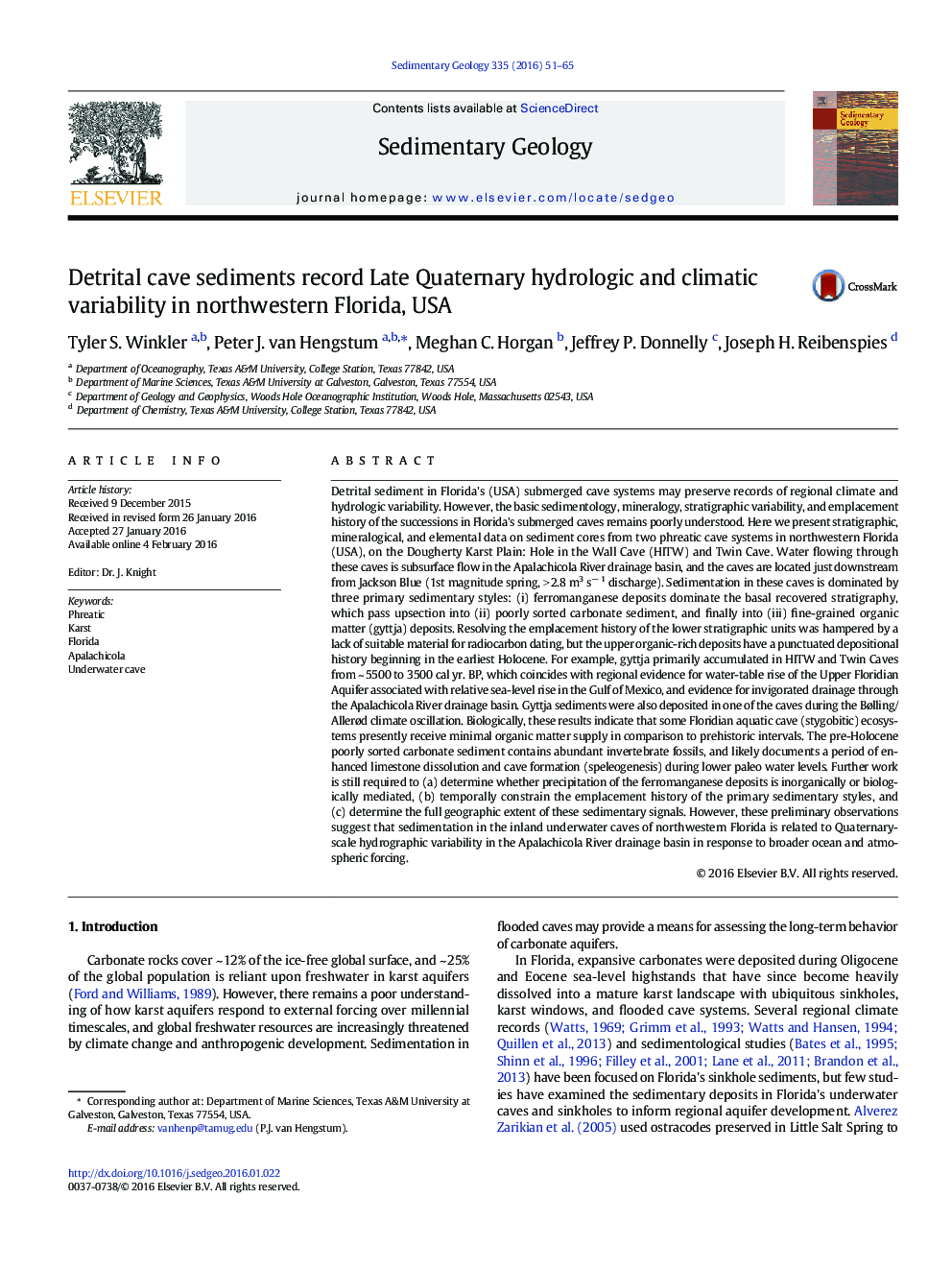| کد مقاله | کد نشریه | سال انتشار | مقاله انگلیسی | نسخه تمام متن |
|---|---|---|---|---|
| 4689089 | 1636028 | 2016 | 15 صفحه PDF | دانلود رایگان |
• First stratigraphic analysis of sediments in a Floridian underwater cave.
• Late Pleistocene sedimentation appears linked to lower paleo water levels.
• Units of carbonate sediment with fossils likely document periods of cave expansion.
• Organic-rich units likely evidence increased precipitation and riverine discharge.
Detrital sediment in Florida's (USA) submerged cave systems may preserve records of regional climate and hydrologic variability. However, the basic sedimentology, mineralogy, stratigraphic variability, and emplacement history of the successions in Florida's submerged caves remains poorly understood. Here we present stratigraphic, mineralogical, and elemental data on sediment cores from two phreatic cave systems in northwestern Florida (USA), on the Dougherty Karst Plain: Hole in the Wall Cave (HITW) and Twin Cave. Water flowing through these caves is subsurface flow in the Apalachicola River drainage basin, and the caves are located just downstream from Jackson Blue (1st magnitude spring, > 2.8 m3 s− 1 discharge). Sedimentation in these caves is dominated by three primary sedimentary styles: (i) ferromanganese deposits dominate the basal recovered stratigraphy, which pass upsection into (ii) poorly sorted carbonate sediment, and finally into (iii) fine-grained organic matter (gyttja) deposits. Resolving the emplacement history of the lower stratigraphic units was hampered by a lack of suitable material for radiocarbon dating, but the upper organic-rich deposits have a punctuated depositional history beginning in the earliest Holocene. For example, gyttja primarily accumulated in HITW and Twin Caves from ~ 5500 to 3500 cal yr. BP, which coincides with regional evidence for water-table rise of the Upper Floridian Aquifer associated with relative sea-level rise in the Gulf of Mexico, and evidence for invigorated drainage through the Apalachicola River drainage basin. Gyttja sediments were also deposited in one of the caves during the Bølling/Allerød climate oscillation. Biologically, these results indicate that some Floridian aquatic cave (stygobitic) ecosystems presently receive minimal organic matter supply in comparison to prehistoric intervals. The pre-Holocene poorly sorted carbonate sediment contains abundant invertebrate fossils, and likely documents a period of enhanced limestone dissolution and cave formation (speleogenesis) during lower paleo water levels. Further work is still required to (a) determine whether precipitation of the ferromanganese deposits is inorganically or biologically mediated, (b) temporally constrain the emplacement history of the primary sedimentary styles, and (c) determine the full geographic extent of these sedimentary signals. However, these preliminary observations suggest that sedimentation in the inland underwater caves of northwestern Florida is related to Quaternary-scale hydrographic variability in the Apalachicola River drainage basin in response to broader ocean and atmospheric forcing.
Figure optionsDownload high-quality image (134 K)Download as PowerPoint slide
Journal: Sedimentary Geology - Volume 335, 15 April 2016, Pages 51–65
